Why City Parks are Vital Components of Green Cities
City parks are not just patches of grass or playgrounds; they are the beating heart of urban environments, serving as essential components of what we call green cities. Imagine stepping out of your concrete jungle and into a lush oasis where the air is fresher and the sounds of nature replace the honking of cars. This transformation is what city parks offer, making them invaluable to our communities. They provide a sanctuary for residents to escape the hustle and bustle, a place where families can gather, friends can connect, and individuals can find solace. But their importance goes beyond mere aesthetics; they play a crucial role in enhancing our quality of life.
First and foremost, city parks are vital for public health. They encourage physical activity by providing space for jogging, cycling, and other recreational activities. Studies have shown that people living near parks are more likely to engage in regular exercise, leading to healthier lifestyles. Furthermore, parks serve as a refuge for mental well-being. The simple act of being surrounded by greenery can reduce stress, anxiety, and depression. Think of parks as urban therapy sessions, where the natural environment works wonders for our mental health.
Moreover, city parks contribute significantly to the environment. They act as the lungs of the city, improving air quality by filtering pollutants and producing oxygen. The trees in these parks absorb carbon dioxide, helping to combat climate change and mitigate the urban heat island effect, which causes cities to be warmer than their rural surroundings. This cooling effect is especially important during sweltering summer months, making parks not only a recreational haven but also a critical environmental asset.
In addition to health and environmental benefits, parks foster community engagement. They serve as gathering spots where people from all walks of life can come together, share experiences, and build relationships. Whether it's through organized events like farmers' markets, concerts, or simply a weekend picnic, parks promote a sense of belonging and community spirit. They are the venues for social interactions that strengthen the fabric of urban life.
Furthermore, investing in city parks has economic advantages. Well-maintained parks can increase property values and attract tourism, which stimulates local businesses. A vibrant park can become a focal point for economic activity, drawing visitors and residents alike. This influx of people not only supports local shops and restaurants but also enhances the overall vitality of the urban area.
City parks play a crucial role in preserving biodiversity within urban settings. They provide habitats for various species of plants and animals, creating pockets of nature amidst the concrete. This biodiversity is essential for maintaining ecological balance and ensuring that our cities remain livable for future generations. Parks serve as vital corridors for wildlife, allowing them to thrive even in densely populated areas.
As we look towards the future, the design of parks must prioritize inclusivity. Accessible parks ensure that everyone, regardless of age or ability, can enjoy the benefits of green spaces. This means creating pathways for wheelchairs, sensory gardens for those with disabilities, and play areas that cater to children of all abilities. By designing parks that are welcoming to all, we foster a sense of community that is rich and diverse.
In conclusion, city parks are much more than just recreational areas; they are essential for the health, environment, economy, and social fabric of urban life. As we continue to build and expand our cities, we must prioritize the creation and maintenance of these green spaces. They are the lungs of our cities, the heart of our communities, and a vital resource for future generations. The future of urban green spaces lies in our hands, and it is our responsibility to ensure they thrive.
- What are the main benefits of city parks? City parks provide health benefits, improve air quality, foster community engagement, and support local biodiversity.
- How do parks contribute to mental health? Parks offer serene environments that reduce stress and anxiety, promoting overall mental well-being.
- Why is biodiversity important in urban parks? Biodiversity helps maintain ecological balance and provides habitats for various species, enriching urban ecosystems.
- How can we make parks more inclusive? By designing parks with features that accommodate all abilities, such as wheelchair-accessible paths and sensory gardens.
- What economic benefits do parks provide? Parks can increase property values, attract tourism, and stimulate local businesses, contributing to the economic vitality of urban areas.
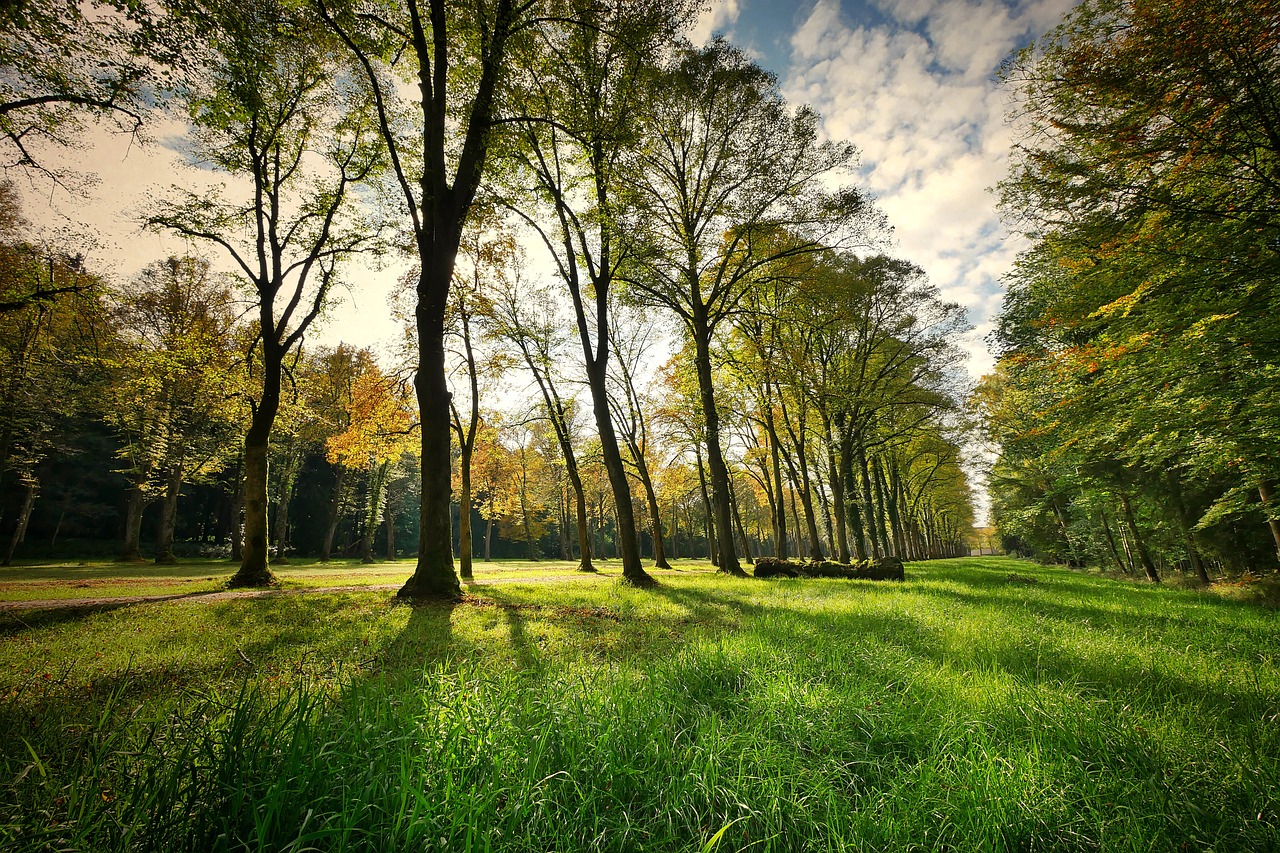
The Health Benefits of Urban Parks
Urban parks are not just patches of green in concrete jungles; they are essential lifelines for our communities, offering a plethora of health benefits that often go unnoticed. Imagine stepping into a park after a long day, where the hustle and bustle of city life fades away, replaced by the soothing sounds of chirping birds and rustling leaves. This serene environment is a sanctuary for both the body and mind. Studies have shown that spending time in nature can significantly reduce stress levels, enhance mood, and even improve cognitive function. It's like hitting the reset button on your mental state!
Physical activity is another major perk of urban parks. They provide the perfect setting for residents to engage in various forms of exercise—be it jogging, cycling, or even a leisurely stroll with friends. According to the Centers for Disease Control and Prevention (CDC), regular physical activity can help reduce the risk of chronic diseases such as obesity, heart disease, and diabetes. Parks encourage an active lifestyle by offering accessible spaces where people can easily incorporate exercise into their daily routines. How many times have you felt motivated to go for a run just because you saw a beautiful park nearby?
Moreover, parks serve as social hubs that foster community interaction. When people gather in these green spaces, they naturally engage in conversations, share experiences, and create lasting connections. This social interaction is crucial for mental health, as it combats feelings of loneliness and isolation. In fact, research suggests that strong social ties can lead to a longer, healthier life. So, the next time you’re enjoying a picnic in the park, remember that you’re not just soaking up the sun; you’re also nurturing your relationships.
But the benefits don't stop there! Urban parks can also play a crucial role in enhancing the overall quality of life in cities. They provide safe spaces for children to play and explore, which is vital for their physical and emotional development. A well-designed park can become a community's heartbeat, offering a variety of recreational activities for all ages. From yoga classes to community gardening, the possibilities are endless!
In summary, the health benefits of urban parks are multifaceted. They not only promote physical activity and mental well-being but also foster social connections and community spirit. Investing in these green spaces is investing in the health of our communities. So, the next time you pass by a park, take a moment to appreciate its role in making our urban lives healthier and happier.
- What are some ways I can utilize my local park for health benefits? You can engage in activities like jogging, walking, yoga, or even organizing community events.
- Are urban parks safe for children? Yes, most urban parks are designed with safety in mind, featuring playgrounds and open spaces for kids to explore.
- How do parks contribute to mental health? Parks provide a calming environment that reduces stress, enhances mood, and encourages social interaction.
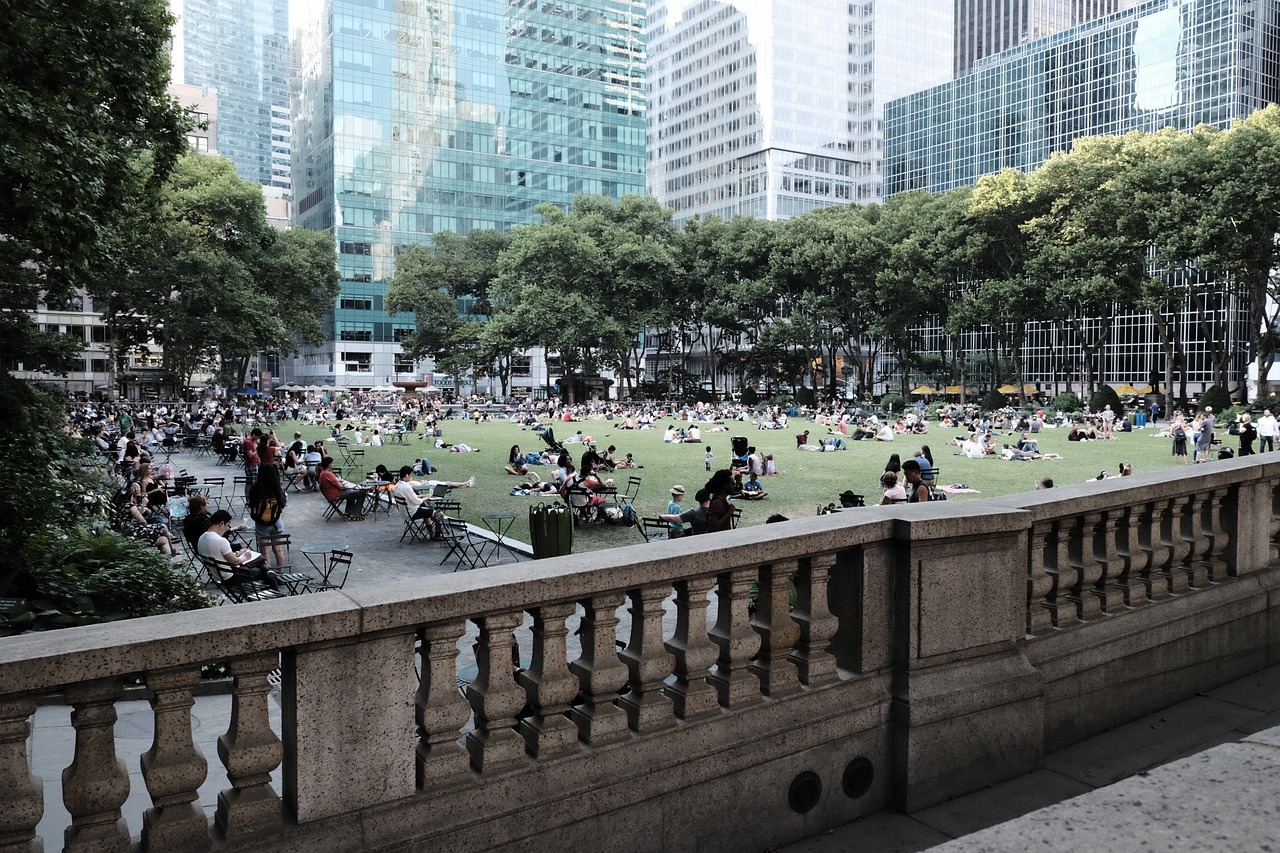
Environmental Impact of Parks
City parks are not just patches of green scattered throughout urban landscapes; they are vital ecosystems that play a significant role in enhancing the environmental quality of our cities. Imagine walking through a park and feeling the fresh air fill your lungs or watching birds flit from tree to tree. These experiences are not just enjoyable—they are essential for our well-being and the health of our planet. Urban parks act as the lungs of the city, filtering pollutants and improving air quality. They absorb carbon dioxide and release oxygen, making the air cleaner for everyone.
Additionally, parks contribute to urban biodiversity by providing habitats for various species. Even in densely populated areas, you can find a surprising array of wildlife thriving in these green spaces. From insects and birds to small mammals, parks serve as sanctuaries that support ecosystems, ensuring that flora and fauna can coexist alongside urban development. This biodiversity is crucial, as it helps maintain ecological balance and resilience against environmental changes.
Moreover, city parks play a significant role in mitigating the urban heat island effect. Urban areas tend to be warmer than their rural counterparts due to human activities and the prevalence of concrete and asphalt. Parks, with their trees and vegetation, provide shade and cool the surrounding air through a process known as evapotranspiration. This natural cooling effect can lower temperatures in urban areas, reducing the need for air conditioning and thereby conserving energy.
To illustrate the environmental benefits of parks, consider the following table:
| Environmental Benefit | Description |
|---|---|
| Improved Air Quality | Parks filter pollutants and produce oxygen, enhancing the air we breathe. |
| Biodiversity Support | They provide habitats for various species, promoting ecological health. |
| Temperature Regulation | Parks help cool urban areas, mitigating the heat island effect. |
| Stormwater Management | Vegetation in parks absorbs rainwater, reducing runoff and flooding. |
In addition to these benefits, parks also play a crucial role in stormwater management. The vegetation in parks absorbs rainwater, which minimizes runoff and reduces the risk of flooding in urban areas. This natural absorption helps recharge groundwater supplies and decreases the burden on stormwater drainage systems. In essence, parks are not merely recreational spaces; they are essential components of urban infrastructure that provide multiple environmental benefits.
As we continue to navigate the challenges of urbanization and climate change, the importance of city parks cannot be overstated. They are not just places for leisure; they are essential for the health of our cities and the well-being of their inhabitants. By prioritizing the preservation and creation of these green spaces, we can foster a more sustainable and livable urban environment for future generations.
- What are the primary benefits of urban parks? Urban parks improve air quality, support biodiversity, regulate temperatures, and manage stormwater.
- How do parks contribute to mental health? Parks provide serene environments for relaxation and social interaction, which can reduce stress and promote well-being.
- Are city parks accessible to everyone? Many cities are working towards inclusive park designs that accommodate diverse needs for recreation and leisure.
- What challenges do urban parks face? Common challenges include funding, maintenance, and encroachment from urban development.

Community Engagement and Social Cohesion
City parks are more than just patches of green in a concrete jungle; they are vibrant community hubs where people come together to connect, share experiences, and build lasting relationships. Imagine a sunny Saturday afternoon where families gather for a picnic, children play on the swings, and friends engage in a friendly game of frisbee. These scenes are not just pleasant to witness; they are crucial for fostering a sense of belonging and community spirit.
When parks serve as gathering spots, they break down barriers. People from different backgrounds, cultures, and age groups can meet and interact in a relaxed environment, promoting social cohesion. This interaction is essential in urban settings where isolation can often creep in. Parks provide a space for spontaneous conversations, shared laughter, and community events that bring residents together.
Moreover, city parks often host a variety of events that cater to diverse interests, such as:
- Farmers' markets showcasing local produce and crafts
- Outdoor concerts that allow residents to enjoy music and entertainment
- Fitness classes promoting health and wellness
- Cultural festivals celebrating the rich tapestry of the community
These activities not only enhance the park's role as a social space but also encourage local participation and volunteerism. When individuals contribute their time and energy to maintain and improve their parks, they develop a sense of ownership and pride. This connection to the space can lead to increased advocacy for its preservation and enhancement, ensuring that parks remain vibrant and accessible for all.
In addition, parks can serve as platforms for community engagement initiatives. For instance, local governments and organizations can organize workshops, clean-up days, or tree-planting events that invite residents to collaborate on enhancing their shared environment. These efforts create a collective responsibility towards maintaining the park's beauty and functionality, thereby strengthening ties among community members.
As we look towards the future, the importance of parks in fostering social connections cannot be overstated. They are essential for building resilient communities where people feel supported and engaged. Investing in these green spaces is not merely about beautifying a city but about cultivating a sense of togetherness and shared identity among its residents.
- Why are parks important for community engagement?
Parks provide a space for people to meet, socialize, and participate in community events, fostering connections and a sense of belonging. - How do parks promote social cohesion?
By hosting diverse activities and events, parks encourage interactions among people from different backgrounds, helping to build relationships and understanding. - What types of events can be held in parks?
Parks can host farmers' markets, concerts, fitness classes, cultural festivals, and community clean-up days, among other events. - How can I get involved in my local park?
You can participate in community events, volunteer for maintenance activities, or even suggest new events or improvements to local authorities.
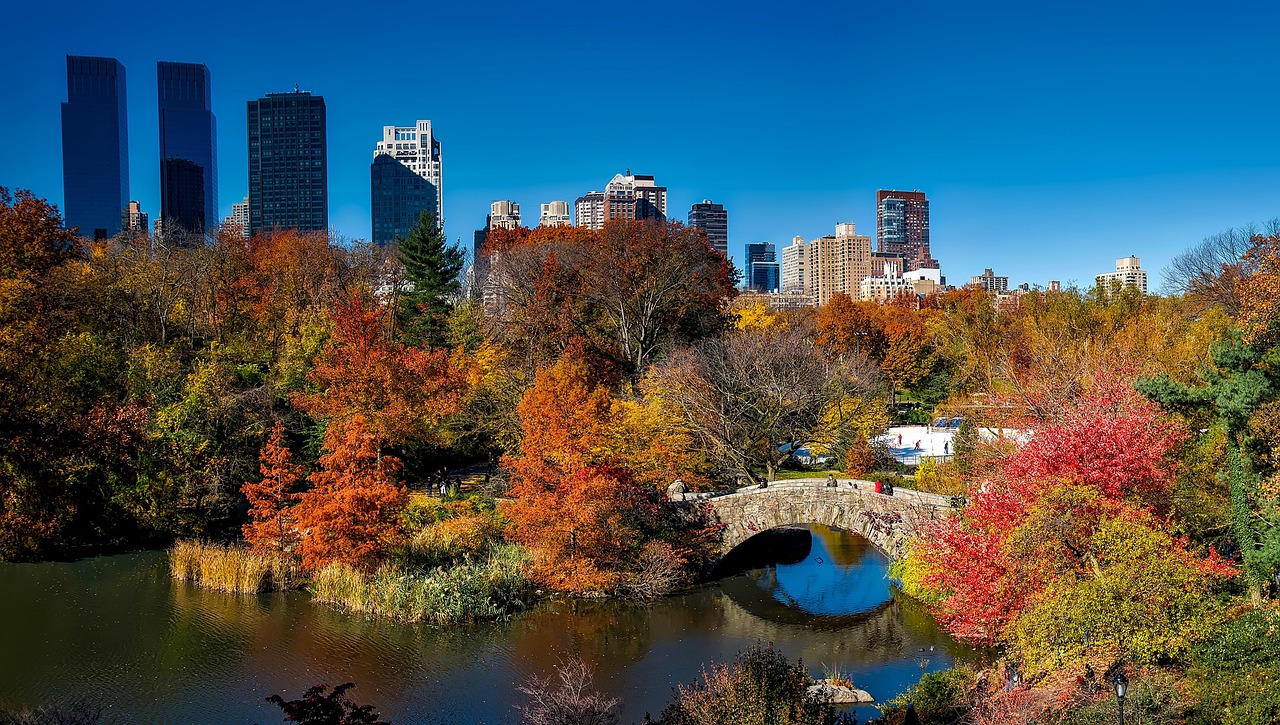
Economic Advantages of Green Spaces
When we think about city parks, we often picture families enjoying picnics, children playing, and joggers hitting the trails. But did you know that these green spaces are also powerhouses for local economies? That's right! Investing in city parks can yield significant economic benefits that ripple through the community.
First and foremost, green spaces can lead to increased property values. Homebuyers are often willing to pay a premium for properties located near parks. According to various studies, homes situated within a quarter-mile of a park can see an increase in value by as much as 20% to 30%. This is because parks enhance the aesthetic appeal of neighborhoods, making them more desirable places to live. Imagine living next to a lush park, where the sound of birds chirping and the sight of blooming flowers become part of your daily routine!
Moreover, parks play a crucial role in attracting tourism. Visitors flock to cities that offer beautiful parks and recreational areas, contributing to the local economy through spending on hotels, restaurants, and various attractions. A well-maintained park can become a tourist hotspot, hosting events, festivals, and outdoor concerts that draw crowds. Just think about how many people travel to see famous parks like Central Park in New York City or Golden Gate Park in San Francisco. These parks not only enhance the urban landscape but also serve as economic engines driving local businesses.
In addition to boosting property values and attracting tourists, parks also stimulate local businesses. When people gather in parks for events or leisure activities, they often visit nearby shops and eateries. This creates a vibrant local economy where businesses thrive. For instance, a small café located near a popular park can see a significant increase in foot traffic, especially during weekends and holidays. As people enjoy their time outdoors, they tend to grab a bite or a drink, benefiting local entrepreneurs.
To put it all into perspective, let’s take a look at a simple table that illustrates the economic impact of green spaces:
| Economic Benefit | Impact |
|---|---|
| Increased Property Values | Homes near parks can appreciate by 20-30% |
| Tourism Attraction | Boosts local spending on accommodations and dining |
| Support for Local Businesses | Increased foot traffic leads to higher sales |
Lastly, let’s not forget the long-term cost savings that parks provide. By promoting active lifestyles, parks can contribute to better public health outcomes, which ultimately reduces healthcare costs for the community. Healthier residents mean fewer hospital visits, lower insurance costs, and a more productive workforce. It’s like planting a seed that grows into a tree of economic benefits!
In conclusion, the economic advantages of green spaces are undeniable. From boosting property values and attracting tourists to supporting local businesses and enhancing public health, city parks are vital to the economic fabric of urban areas. So, the next time you stroll through your local park, take a moment to appreciate not just its beauty but also its profound impact on the economy!
- How do city parks increase property values? City parks enhance the aesthetic appeal of neighborhoods, making them more desirable to homebuyers.
- What role do parks play in tourism? Parks attract visitors, which stimulates local spending on hotels, restaurants, and attractions.
- Can parks help local businesses? Yes, parks create foot traffic that benefits nearby shops and eateries.
- What are the long-term economic benefits of parks? Parks promote healthier lifestyles, reducing healthcare costs and contributing to a more productive workforce.
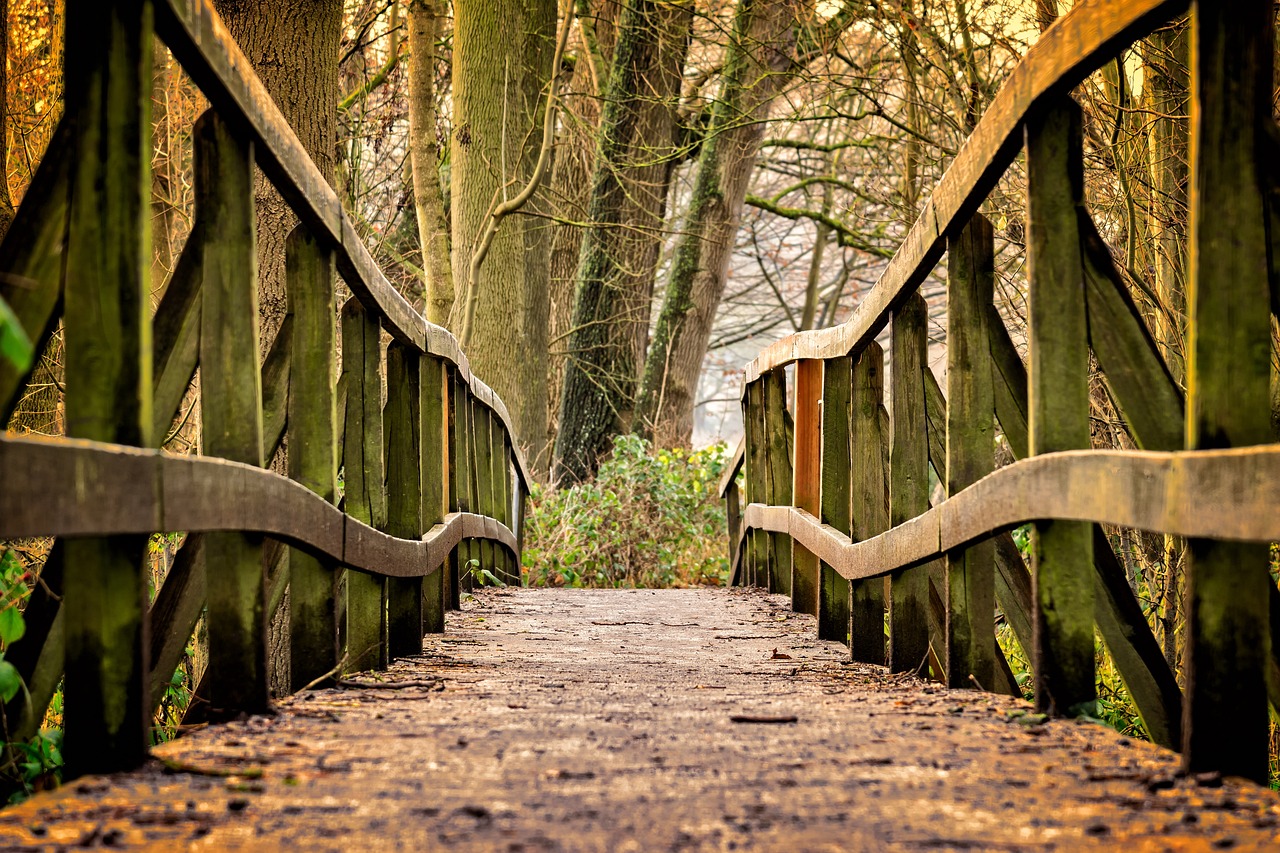
Promoting Biodiversity in Urban Areas
In the hustle and bustle of city life, it’s easy to overlook the small wonders of nature that exist right under our noses. City parks are not just patches of grass and trees; they are vital sanctuaries that promote biodiversity in urban settings. Imagine walking through a park and spotting a vibrant array of flowers, chirping birds, and perhaps even a few squirrels playing around. These parks serve as crucial habitats for various species, creating a mini-ecosystem amidst the concrete jungle.
Urban areas, often characterized by their high population density and extensive development, can pose significant challenges for local wildlife. However, city parks can counteract these challenges by providing essential green spaces that support a diverse range of flora and fauna. For instance, parks can host native plants that attract pollinators like bees and butterflies, which are indispensable for maintaining ecological balance. By incorporating native species into park designs, we can enhance the local ecosystem, ensuring that these plants and the wildlife that depend on them thrive.
Moreover, parks can serve as vital corridors for wildlife, allowing animals to navigate through urban landscapes without facing the dangers of busy roads and human interference. This connectivity is crucial for species that require larger territories to find food and mates. When parks are strategically placed and linked, they create a network that supports wildlife movement and genetic diversity. Just as a river flows through a landscape, these parks can weave through the urban fabric, connecting different habitats and allowing nature to flourish.
To further promote biodiversity, city planners and community members can implement various strategies within parks. Here are a few approaches:
- Creating Wildlife Habitats: Incorporate features like birdhouses, bee hotels, and native plant gardens that provide shelter and food for various species.
- Implementing Sustainable Practices: Use organic gardening techniques and reduce pesticide use to create a healthier environment for wildlife.
- Engaging the Community: Organize educational programs that raise awareness about local wildlife and encourage residents to participate in conservation efforts.
The benefits of promoting biodiversity in urban parks extend beyond just the wildlife. A rich variety of species contributes to a more resilient ecosystem, which can better withstand environmental changes and disturbances. Furthermore, parks that prioritize biodiversity can enhance the overall quality of life for residents. Imagine a neighborhood where children can learn about nature firsthand, where adults can unwind in a lush, vibrant environment, and where everyone feels connected to the natural world. This is the kind of community we can foster when we prioritize biodiversity in our urban parks.
As we look to the future, it’s clear that the role of city parks in promoting biodiversity will only grow in importance. With ongoing urbanization and climate change, creating and maintaining these green spaces will be essential for ensuring that both people and wildlife can thrive together. By investing in our parks and supporting biodiversity initiatives, we can pave the way for greener, healthier cities that celebrate the beauty of nature in every corner.
What is biodiversity, and why is it important in urban areas?
Biodiversity refers to the variety of life in a particular habitat or ecosystem. In urban areas, promoting biodiversity is crucial for ecological balance, providing habitats for wildlife, and enhancing the overall quality of life for residents.
How can city parks support local wildlife?
City parks can support local wildlife by providing green spaces that include native plants, water sources, and shelter. This helps create habitats that attract and sustain various species, from insects to birds.
What are some ways communities can get involved in promoting biodiversity?
Communities can engage in biodiversity initiatives by participating in park clean-ups, planting native gardens, organizing educational workshops, and advocating for sustainable practices within their local parks.
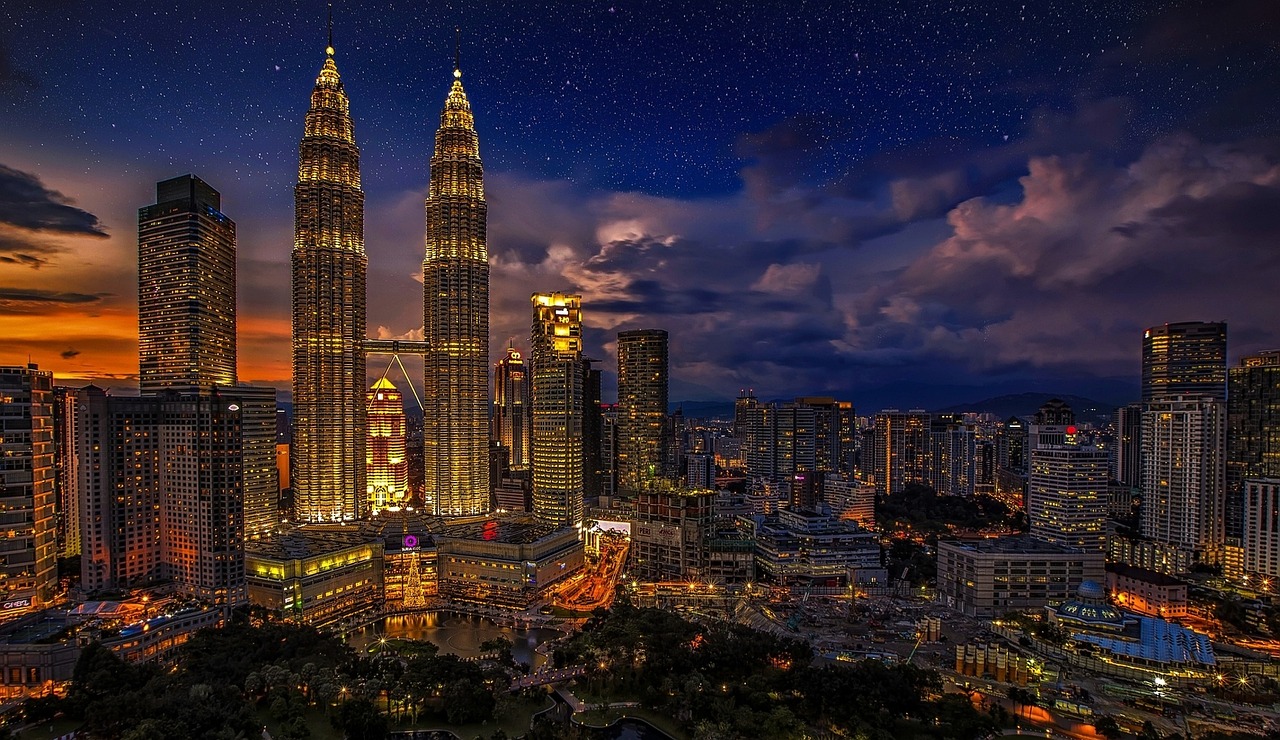
Designing Inclusive Parks
When we think about parks, we often picture lush green spaces filled with children playing, families picnicking, and friends enjoying a leisurely stroll. However, have you ever considered who gets to enjoy these beautiful areas? Designing inclusive parks is crucial to ensuring that everyone, regardless of their abilities or backgrounds, can access and enjoy these vital community resources. Imagine a park where every child, parent, and elder can feel welcome and safe—this vision is not just a dream but a necessity in our increasingly diverse urban landscapes.
To achieve this, park planners and designers must prioritize accessibility in their designs. This means incorporating features like wheelchair-friendly pathways, sensory-friendly spaces, and inclusive playground equipment that accommodates children of all abilities. For instance, tactile surfaces can help visually impaired individuals navigate the park, while sensory gardens can provide calming experiences for those with sensory processing challenges. By thinking about the needs of all community members, we can create parks that truly serve everyone.
Moreover, community involvement plays a pivotal role in the design process. Engaging local residents, especially those with disabilities or special needs, can provide invaluable insights into what features are most important to them. This collaborative approach not only fosters a sense of ownership among community members but also ensures that the park reflects the diverse needs of its users. As a result, parks become more than just recreational spaces; they transform into community hubs where everyone feels valued and included.
Additionally, inclusive park design should also consider elements like safety and comfort. Adequate lighting, well-maintained paths, and visible signage can help make parks feel safer for all visitors. Furthermore, providing shaded areas and seating can enhance the overall experience, allowing people to gather and socialize comfortably. By addressing these factors, we can create inviting environments that encourage people to spend time outdoors, fostering connections and community spirit.
In conclusion, designing inclusive parks is not just about meeting legal requirements; it’s about building spaces that enrich lives and strengthen communities. By prioritizing accessibility, engaging with local residents, and considering safety and comfort, we can ensure that our parks are welcoming to everyone. As we move forward, let’s commit to creating parks that reflect our diverse society and promote a sense of belonging for all.
- What are some key features of an inclusive park?
Key features include accessible pathways, inclusive playground equipment, sensory gardens, and adequate seating areas. - How can community members get involved in park design?
Community members can participate in public meetings, provide feedback through surveys, and collaborate with designers to share their needs and ideas. - Why is safety important in park design?
Safety is crucial to ensure that all visitors feel comfortable and secure while enjoying the park, which encourages more people to use these spaces.
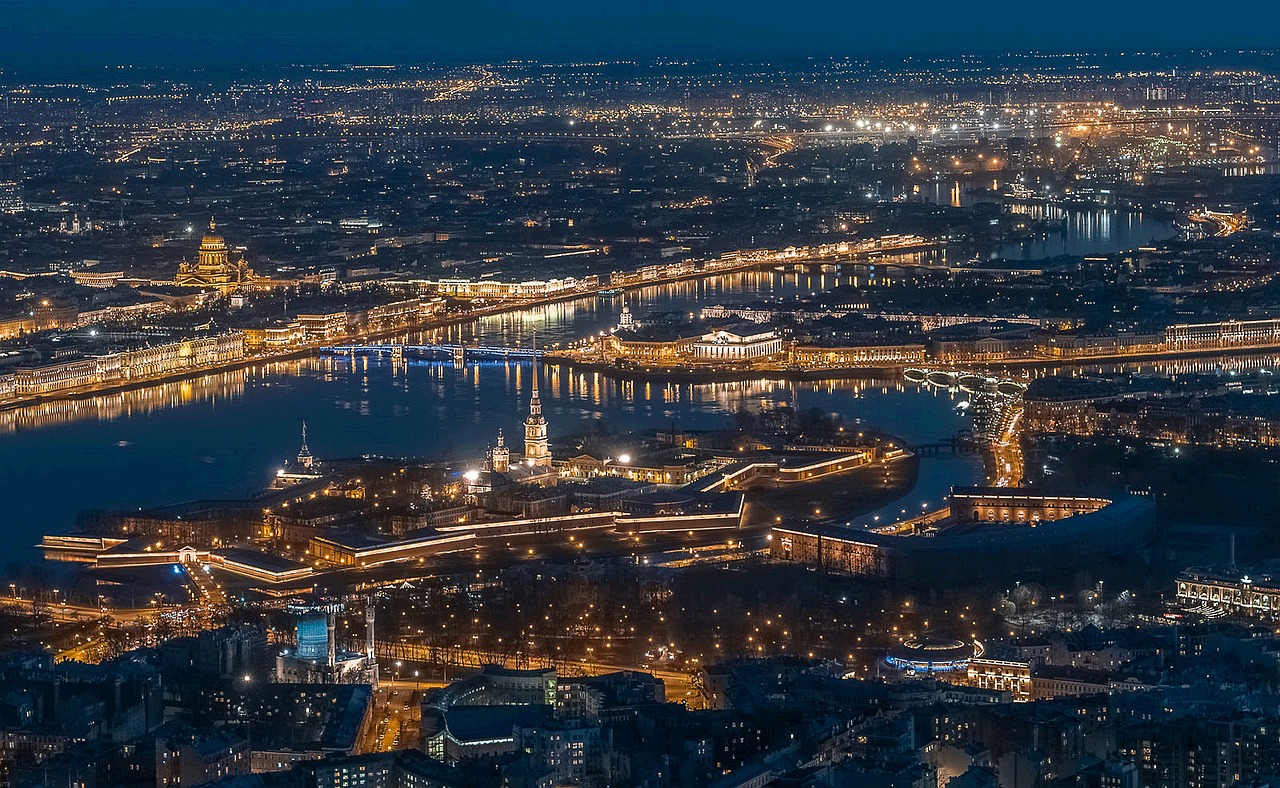
Educational Opportunities in Parks
City parks are not just beautiful green spaces; they are also vibrant classrooms that offer a plethora of educational opportunities for people of all ages. Imagine strolling through a park and stumbling upon a guided nature walk, where you can learn about local flora and fauna while soaking up the sun. Parks can serve as living laboratories, providing hands-on experiences that ignite curiosity and foster a deeper understanding of our environment. Whether it's a school group learning about ecosystems or families participating in workshops about sustainable gardening, the educational potential of urban parks is immense.
One of the most exciting aspects of parks is their ability to host various educational programs. These programs can range from environmental stewardship initiatives to art workshops that encourage creativity and self-expression. For example, many parks offer:
- Nature Conservation Programs: These programs educate participants about the importance of protecting natural habitats and the biodiversity within them.
- Outdoor Science Classes: Schools can take advantage of the natural setting to teach students about biology, geology, and ecology in an engaging way.
- Community Gardening Workshops: These hands-on sessions teach individuals how to grow their own food, emphasizing sustainability and healthy eating.
Moreover, parks also provide a platform for community engagement through educational events. Imagine a weekend festival where local experts share their knowledge about sustainable living, wildlife conservation, and even urban farming. These events not only educate but also bring people together, fostering a sense of community and shared responsibility for the environment. The more we learn about our surroundings, the more we appreciate and want to protect them.
Additionally, parks can be designed to include informational signage that highlights the unique features of the local ecosystem. These signs can provide valuable insights into the types of plants and animals that inhabit the area, making a simple walk through the park an enriching experience. Children and adults alike can benefit from this interactive learning experience, turning a leisurely stroll into an educational adventure.
As we look to the future, the role of parks in education will only continue to grow. With the increasing focus on sustainability and environmental awareness, parks can serve as crucial resources for teaching the next generation about the importance of preserving our planet. By integrating educational opportunities into park design and programming, we can ensure that these green spaces remain not only a source of recreation but also a foundation for lifelong learning.
Q: What types of educational programs are typically offered in city parks?
A: City parks often host a variety of educational programs, including nature walks, gardening workshops, wildlife conservation classes, and outdoor science lessons.
Q: How can I find out about educational events in my local park?
A: You can check your local park's website or social media pages for upcoming events. Many parks also post flyers in the park itself.
Q: Are educational programs in parks only for children?
A: No, educational programs in parks are designed for all ages. Many events cater to families, adults, and seniors, ensuring that everyone has the opportunity to learn.
Q: Can schools organize field trips to city parks?
A: Absolutely! Many parks welcome school groups and offer special programs tailored to educational needs, making it a great field trip destination.

Challenges Facing Urban Parks
Urban parks, while essential to the fabric of city life, face a myriad of challenges that threaten their existence and functionality. One of the most pressing issues is funding. Many municipalities struggle to allocate sufficient budgets for the maintenance and development of these green spaces. As cities grow and budgets tighten, parks often fall to the bottom of the priority list, leading to neglected landscapes and diminished community engagement. Imagine a vibrant park filled with laughter and play, now reduced to a shadow of its former self due to lack of resources. This is the reality for many urban parks today.
Another significant challenge is maintenance. Over time, wear and tear, coupled with natural elements, can take a toll on park facilities such as playgrounds, benches, and walking paths. Without regular upkeep, these amenities can become unsafe or unusable, discouraging community use. Furthermore, the challenge of maintaining biodiversity within urban parks cannot be overlooked. Invasive species, pollution, and climate change all threaten the delicate ecosystems that parks strive to sustain.
Moreover, urban parks are often at risk of encroachment. As cities expand, the pressure to develop land for housing or commercial purposes can lead to the reduction of park space. This encroachment not only diminishes the area available for recreation but also impacts the wildlife that these parks support. Imagine a family of deer that once roamed freely now pushed out by new construction. This loss of habitat can lead to a decline in local biodiversity, which is detrimental to the overall health of the urban environment.
In addition to these challenges, urban parks must also contend with issues of accessibility. Many parks are not designed with inclusivity in mind, making it difficult for individuals with disabilities or those from marginalized communities to enjoy these spaces. This lack of accessibility not only limits the use of parks but also perpetuates social inequities. To combat this, cities must prioritize inclusive design, ensuring that parks are welcoming and usable by everyone.
Lastly, the challenge of community engagement cannot be ignored. Parks thrive when people actively use and care for them. However, if residents feel disconnected or uninformed about their local parks, they are less likely to participate in community events or volunteer for maintenance efforts. Building a strong sense of community around urban parks requires ongoing outreach and education, fostering a culture of stewardship that can help these spaces flourish.
In summary, while urban parks are vital to the health and well-being of city residents, they are not without their challenges. Addressing issues of funding, maintenance, encroachment, accessibility, and community engagement is crucial for ensuring that these green spaces continue to thrive for generations to come. As we look to the future, it’s clear that innovative solutions and active community involvement are essential in overcoming these obstacles.
- What are some common funding sources for urban parks? Many parks rely on a combination of government funding, grants, and community fundraising efforts.
- How can communities get involved in maintaining their local parks? Communities can participate in volunteer days, join park advisory boards, or organize local events to raise awareness and funds.
- What are some examples of successful urban park projects? Cities like New York with the High Line and Chicago with Millennium Park have transformed underutilized spaces into thriving community hubs.
- How can urban parks be made more accessible? Incorporating features such as paved pathways, accessible restrooms, and sensory-friendly elements can enhance park accessibility.
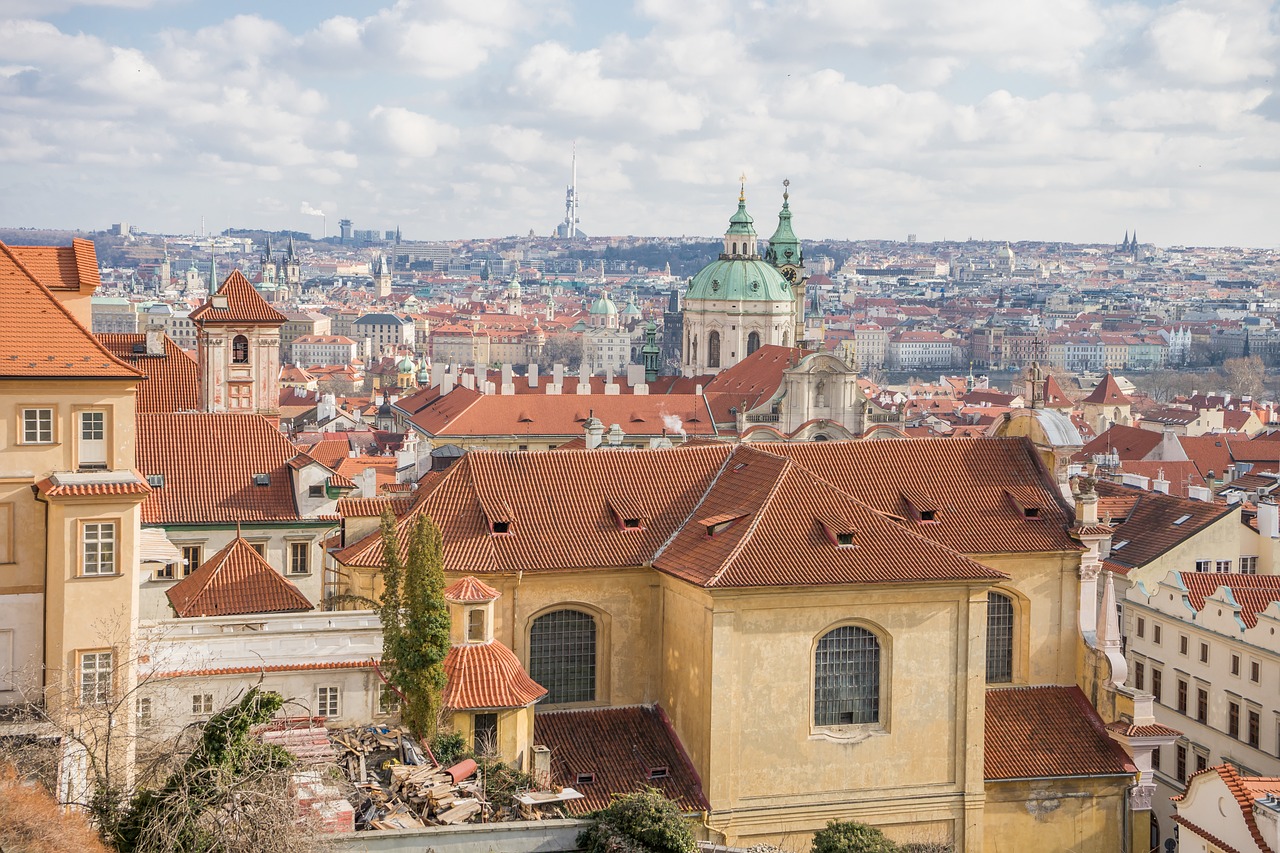
The Future of Urban Green Spaces
As we look ahead, the future of urban green spaces is both exciting and challenging. With the rapid pace of urbanization, cities are becoming more crowded, and the demand for green spaces is increasing. But how can we ensure that these vital areas are preserved and enhanced for future generations? One approach is through creative planning that integrates parks into the urban fabric. Imagine a city where every neighborhood is just a short walk away from a lush park, filled with trees, flowers, and spaces for community gatherings. This vision is not just a dream; it's a necessity for healthier urban living.
To achieve this, cities must prioritize sustainability in their planning processes. This means not only creating new parks but also investing in the maintenance and revitalization of existing ones. Collaborative efforts between city planners, environmentalists, and community members can lead to innovative solutions that cater to the needs of all residents. For instance, incorporating native plants in park designs can enhance biodiversity while requiring less maintenance and water. Additionally, parks can be designed to manage stormwater effectively, reducing flooding and improving water quality.
Furthermore, community involvement is crucial. Engaging residents in the design and upkeep of their local parks fosters a sense of ownership and pride. When people feel connected to their green spaces, they are more likely to participate in activities that support the park's health, such as volunteer clean-up days or planting events. This not only strengthens community ties but also ensures that parks reflect the unique character and needs of the neighborhood.
Technology also plays a significant role in the future of urban green spaces. Smart city innovations can enhance park management and user experience. For example, apps that provide real-time information about park activities, events, and even the health of the flora and fauna can encourage more people to visit and engage with their local parks. Imagine receiving notifications about a community yoga class or a pop-up farmers market happening just around the corner!
In addition to technology, the integration of art and culture in park spaces can transform them into vibrant community hubs. Public art installations, performance spaces, and cultural events can draw diverse crowds, making parks not just a place for recreation but a center for cultural expression. This multifaceted approach to park design will ensure that they remain relevant and cherished spaces in our rapidly changing urban landscapes.
As we envision the future of urban green spaces, we must also address the challenges that lie ahead. Funding remains a significant hurdle, as many cities struggle to allocate resources for park development and maintenance. Innovative funding models, such as public-private partnerships, can provide the necessary financial support while also encouraging community investment in these vital spaces.
In conclusion, the future of urban green spaces hinges on our ability to adapt and innovate. By embracing sustainability, fostering community engagement, leveraging technology, and integrating cultural elements, we can create urban parks that not only meet the needs of today but also inspire future generations to cherish and protect these essential green havens.
- What are the key benefits of urban green spaces?
Urban green spaces provide numerous benefits, including improved mental and physical health, enhanced biodiversity, and increased community cohesion. - How can communities get involved in their local parks?
Communities can participate through volunteer programs, attending local meetings, and engaging in park design initiatives. - What role does technology play in urban parks?
Technology can improve park management, enhance user experience, and facilitate community engagement through apps and smart city innovations. - How can cities fund the development of new parks?
Innovative funding models, such as public-private partnerships and community fundraising, can help cities secure the necessary resources for park development.
Frequently Asked Questions
- What are the health benefits of urban parks?
Urban parks are like a breath of fresh air in the hustle and bustle of city life. They provide essential green spaces that encourage physical activity, whether it’s jogging, biking, or simply walking your dog. Plus, these parks offer a peaceful retreat for mental relaxation, helping to reduce stress and anxiety. Imagine having a mini-vacation right in your neighborhood!
- How do city parks impact the environment?
City parks are environmental superheroes! They improve air quality by filtering pollutants and producing oxygen. These green spaces also support local wildlife by providing habitats, and they help combat the urban heat island effect, making cities cooler and more livable. Think of parks as nature's air conditioners!
- Why are parks important for community engagement?
Parks are the heart of any community. They serve as gathering spots where neighbors can connect, share experiences, and build lasting friendships. Whether it's a summer concert, a farmers' market, or just a picnic, parks foster social interactions and create a sense of belonging among residents. It’s like having a community living room outdoors!
- What economic advantages do green spaces offer?
Investing in city parks is like planting seeds for economic growth. They can boost property values, attract tourism, and stimulate local businesses. A well-maintained park can turn a neighborhood into a desirable destination, leading to increased foot traffic and sales for nearby shops. It’s a win-win for everyone!
- How do parks promote biodiversity?
Parks are crucial for preserving local flora and fauna, acting as sanctuaries for various species even in densely populated areas. They provide essential habitats that support biodiversity, allowing different plants and animals to thrive. Think of parks as little patches of wilderness in the urban jungle!
- What makes a park inclusive?
Inclusive park design means creating spaces that everyone can enjoy, regardless of age or ability. This includes accessible pathways, adaptive play equipment, and facilities for all community members. It’s about ensuring that parks are welcoming to everyone, making them truly communal spaces.
- Can parks serve educational purposes?
Absolutely! Parks can act as outdoor classrooms, offering educational programs about environmental stewardship, sustainability, and the importance of green spaces. These initiatives help instill a love for nature in future generations, making parks not just recreational spaces but also places of learning.
- What challenges do urban parks face?
Despite their numerous benefits, urban parks often struggle with challenges like funding, maintenance, and encroachment. These issues can hinder the sustainability and accessibility of parks. However, with innovative solutions and community involvement, we can ensure that our parks remain vibrant and welcoming for all.
- What does the future hold for urban green spaces?
The future of urban parks looks promising, but it requires creative planning and active community involvement. As cities evolve, the role of parks in promoting healthier, greener environments will only grow. Together, we can shape a future where parks continue to thrive and enhance our quality of life.



















